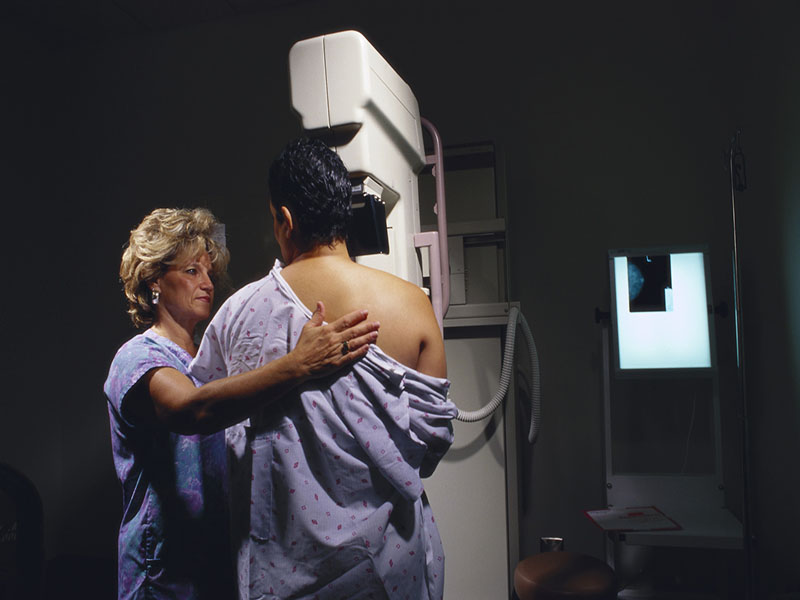Could 3-D Mammograms Soon Be the Standard for Breast Cancer Screening?

MONDAY, June 24, 2019 (HealthDay News) -- More women are getting 3-D mammograms, which spot breast anomalies more accurately than traditional mammograms, a new study shows.
But there are big variations in use across the United States, the researchers noted.
Three-D mammography -- also called digital breast tomosynthesis (DBT) -- combines low-dose X-rays with software that creates a three-dimensional image of the breast. Compared to 2-D mammography, DBT may make it easier to detect a breast abnormality.
But DBT has not been widely endorsed for routine breast cancer screening.
In this study, Yale University researchers analyzed data on millions of claims filed with private health insurance plans and Medicare over three years.
Between 2015 and 2017, DBT use rose from 13% to 43% of breast-cancer screening exams, and the increase was similar among privately insured women and those with Medicare.
Use of DBT rose faster in the Northeast and Northwest, but more slowly in the Southeast. It was adopted faster in regions with higher incomes, more education and more whites.
"DBT has become very popular overall, although uptake has been uneven. In some areas of the country, it is rarely used while in others it is the predominant mode of screening," said corresponding author Dr. Ilana Richman, an assistant professor at Yale School of Medicine in New Haven, Conn.
While evidence suggests DBT may improve cancer detection rates and reduce false-positive results, more research is needed to assess its impact on breast cancer deaths, the authors noted.
"Although there is a lot of interest in this new technology, we don't know much about how it will affect the long-term health of women," Richman said in a Yale news release. "There are ongoing studies designed to answer these questions, and we hope to have clearer answers in the next few years."
Two groups that provide guidance to doctors about cancer screening -- the U.S. Preventive Services Task Force and the American Cancer Society -- have not recommended for or against the routine use of DBT.
But the researchers said these new findings, published June 24 in the journal JAMA Internal Medicine, suggest that DBT will soon replace 2-D mammography as the standard of care.
"These findings highlight how quickly changes in medical practice -- the rate that doctors adopt these new tests -- can eclipse our ability to evaluate whether they are helping patients to live longer and healthier lives," said senior study author Dr. Cary Gross, a professor of medicine at Yale.
More information
The U.S. National Cancer Institute has more on breast cancer screening.

The news stories provided in Health News and our Health-E News Newsletter are a service of the nationally syndicated HealthDay® news and information company. Stories refer to national trends and breaking health news, and are not necessarily indicative of or always supported by our facility and providers. This information is provided for informational and educational purposes only, and is not intended to be a substitute for medical advice, diagnosis, or treatment.

